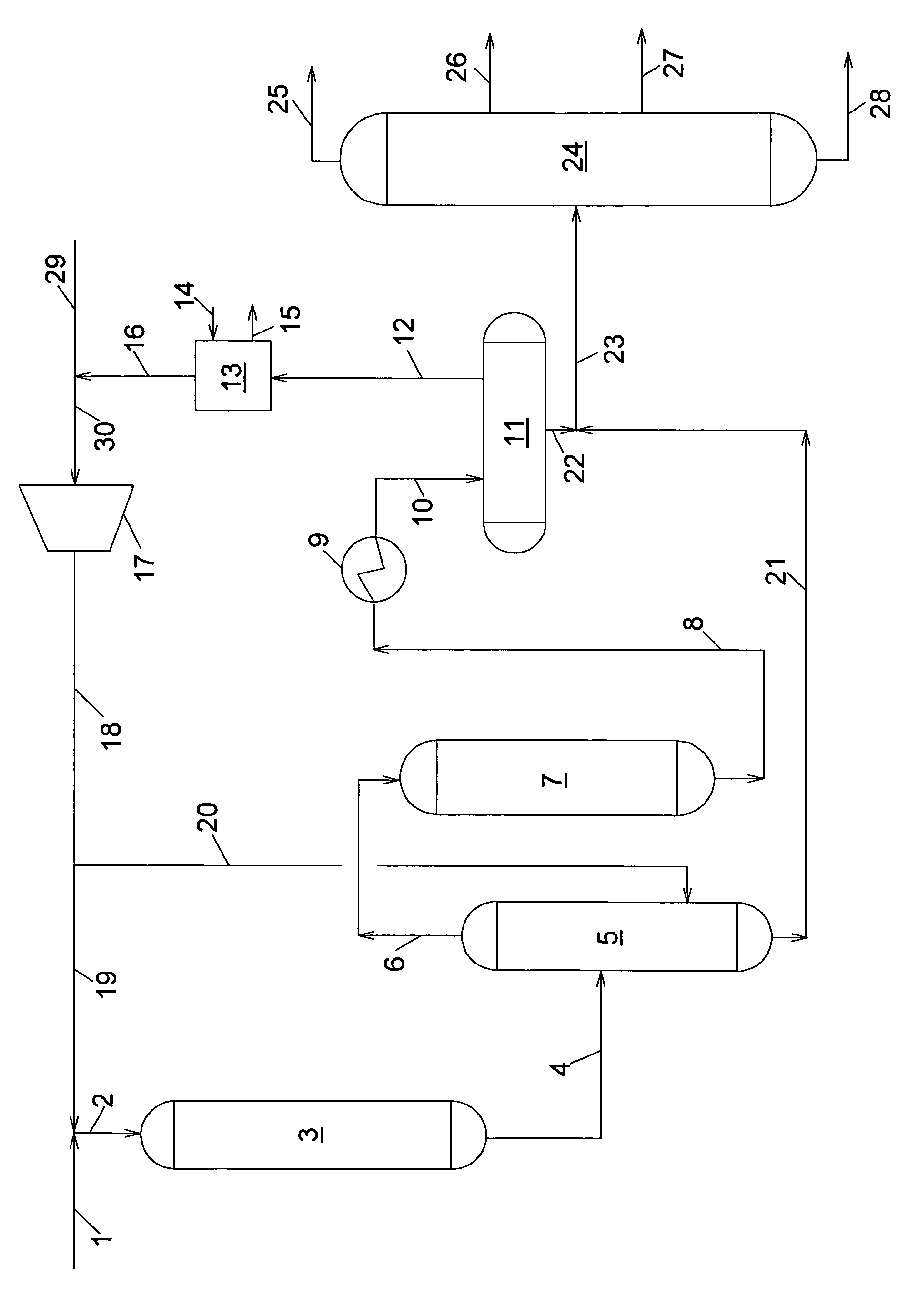Hydrocarbon conversion process
a technology of hydrocarbons and conversion processes, applied in the direction of hydrocarbon oil treatment products, thickeners, fuels, etc., can solve the problems of less economic desirable effects
- Summary
- Abstract
- Description
- Claims
- Application Information
AI Technical Summary
Benefits of technology
Problems solved by technology
Method used
Image
Examples
Embodiment Construction
[0007]An integrated hydrodesulfurization and hydrocracking process has been discovered which is capable of converting a hydrocarbonaceous feedstock containing light cycle oil and vacuum gas oil to produce a naphtha boiling range hydrocarbon stream and a higher boiling hydrocarbonaceous stream having a reduced concentration of sulfur.
[0008]The feedstock contains light cycle oil which is an undesirable by-product produced in an FCC unit while converting vacuum gas oil to gasoline. Light cycle oil is an economical and advantageous feedstock since it is undesirable as a finished product and contains significant quantities of sulfur, nitrogen and polynuclear aromatic compounds. Therefore, the present invention is able to convert a feedstock containing low-value LCO and vacuum gas oil into a valuable naphtha boiling range hydrocarbon stream and a desirable feed for a fluid catalytic cracking process.
[0009]In accordance with the present invention, the selected feedstock is introduced into ...
PUM
| Property | Measurement | Unit |
|---|---|---|
| temperature | aaaaa | aaaaa |
| pressure | aaaaa | aaaaa |
| temperature | aaaaa | aaaaa |
Abstract
Description
Claims
Application Information
 Login to View More
Login to View More - R&D Engineer
- R&D Manager
- IP Professional
- Industry Leading Data Capabilities
- Powerful AI technology
- Patent DNA Extraction
Browse by: Latest US Patents, China's latest patents, Technical Efficacy Thesaurus, Application Domain, Technology Topic, Popular Technical Reports.
© 2024 PatSnap. All rights reserved.Legal|Privacy policy|Modern Slavery Act Transparency Statement|Sitemap|About US| Contact US: help@patsnap.com









